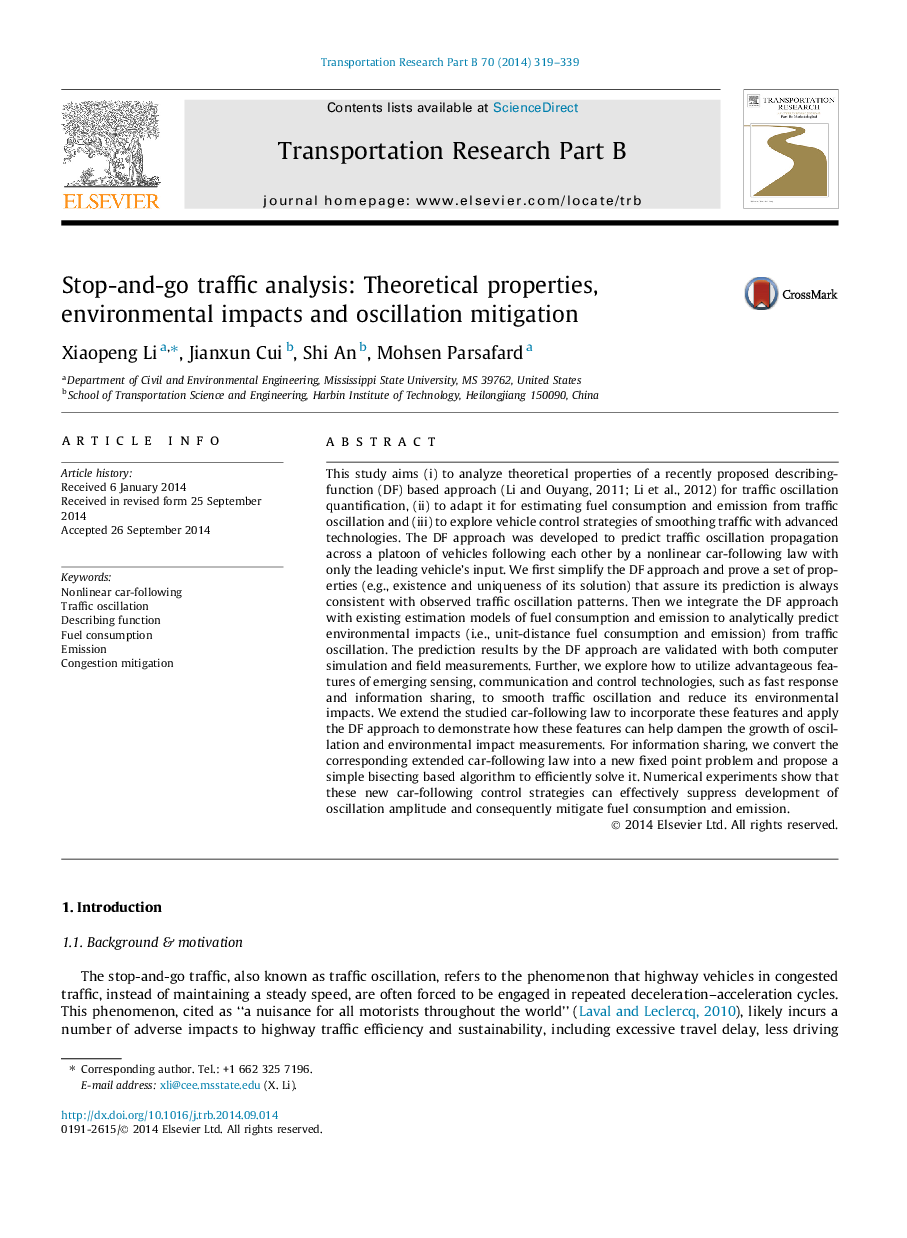| کد مقاله | کد نشریه | سال انتشار | مقاله انگلیسی | نسخه تمام متن |
|---|---|---|---|---|
| 1131890 | 1488973 | 2014 | 21 صفحه PDF | دانلود رایگان |
• Theoretical properties of the describing function based quantification approach.
• Quantifying environmental impacts of traffic oscillation.
• Oscillation mitigation by reducing reaction time and sharing information.
• A fixed point based algorithm for car-following laws with information sharing.
This study aims (i) to analyze theoretical properties of a recently proposed describing-function (DF) based approach (Li and Ouyang, 2011; Li et al., 2012) for traffic oscillation quantification, (ii) to adapt it for estimating fuel consumption and emission from traffic oscillation and (iii) to explore vehicle control strategies of smoothing traffic with advanced technologies. The DF approach was developed to predict traffic oscillation propagation across a platoon of vehicles following each other by a nonlinear car-following law with only the leading vehicle’s input. We first simplify the DF approach and prove a set of properties (e.g., existence and uniqueness of its solution) that assure its prediction is always consistent with observed traffic oscillation patterns. Then we integrate the DF approach with existing estimation models of fuel consumption and emission to analytically predict environmental impacts (i.e., unit-distance fuel consumption and emission) from traffic oscillation. The prediction results by the DF approach are validated with both computer simulation and field measurements. Further, we explore how to utilize advantageous features of emerging sensing, communication and control technologies, such as fast response and information sharing, to smooth traffic oscillation and reduce its environmental impacts. We extend the studied car-following law to incorporate these features and apply the DF approach to demonstrate how these features can help dampen the growth of oscillation and environmental impact measurements. For information sharing, we convert the corresponding extended car-following law into a new fixed point problem and propose a simple bisecting based algorithm to efficiently solve it. Numerical experiments show that these new car-following control strategies can effectively suppress development of oscillation amplitude and consequently mitigate fuel consumption and emission.
Journal: Transportation Research Part B: Methodological - Volume 70, December 2014, Pages 319–339
